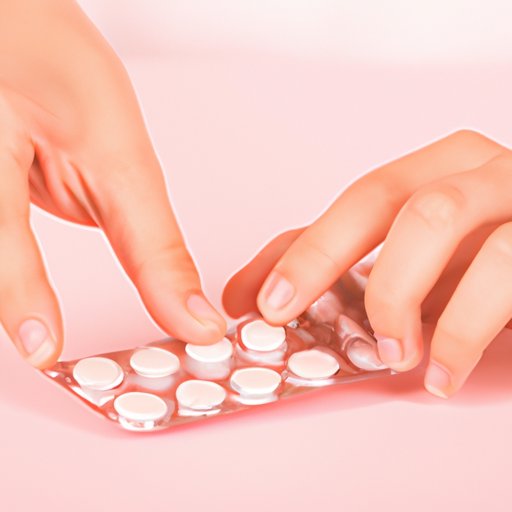
Introduction
Blister formation is a common problem, often occurring on the feet, as a result of repeated friction, heat, or burns. Blisters can be painful and interfere with daily activities. Popping a blister can offer quick relief, but if done improperly, can lead to infection and make things worse. In this comprehensive guide, we will provide you with all the necessary information on how to safely pop a blister while discussing alternative treatments, preventative measures, and personal experiences.
Step-by-Step Guide to Popping a Blister
Before you start popping a blister, it is essential to adhere to necessary preparation guidelines to reduce infection risk. This includes sterilizing your hands with soap and water, cleaning the blister with a mild antiseptic solution, and preparing a sterile needle.
When popping a blister, the aim is to create a small opening near the blister’s edge, enabling fluid drainage while keeping as much skin intact. For this, disinfect the needle and carefully puncture the blister. Next, gently press the blister’s edges towards the center to allow the fluid to escape, reducing the risk of skin peeling. Finally, apply an antibiotic ointment and cover the blister with a bandage that securely wraps it to prevent further friction and protect it from contamination.
Aftercare is crucial to promote proper healing. Keep the area dry, refrain from peeling any skin, apply ointment, and change the bandage daily for a few days.
Alternative Treatments for Blister Relief
Not all blisters need to be popped, especially if they are not painful or likely to burst on their own. It is better to use alternative treatments that can provide relief and reduce the risk of infection. Natural remedies such as aloe vera gel or tea tree oil, or over-the-counter topical creams and ointments can alleviate pain and reduce inflammation. These treatments are most effective for smaller blisters that are unlikely to burst on their own.
Preventative Measures to Avoid Blisters
The best way to avoid blisters is prevention. Good footwear is essential to reduce friction, and new shoes need to be broken in gradually. Socks with moisture absorption properties and foot powder to reduce friction are helpful. Take extra care to ensure your feet are clean and dry, especially during exercise or when wearing enclosed shoes for long periods. Cushioning and padding incorporated in footwear insoles can also be helpful.
Q&A Style Article on Popping Blisters
It’s natural to have some questions about popping blisters. To assist, we’ve compiled a Q&A style section:
Is it safe to pop a blister?
Yes, but it’s important to follow the proper preparations and guidelines we outlined previously.
What do I do after I have popped the blister?
It is crucial to clean the area thoroughly, apply an antibiotic ointment, and wrap the area securely with a bandage. Also, avoid the urge to peel dead or hanging skin.
What should I do if a blister becomes infected?
If there are signs of infection, such as redness, swelling, pus, or pain, it is essential to seek medical attention. Your doctor may indicate an antibiotic course or recommend further treatment.
Personal Experience with Managing Blisters
As someone who often experiences blisters, I have done my fair share of popping them. I found that using a sterilized needle and sterilizing my hands and feet first is crucial to avoid infection. Aftercare is also important, as it helps the blister heal faster. However, when it comes to alternative treatments, I found that tea tree oil provides quick relief and is generally effective for smaller blisters.
Types of Blisters and Tips for Treating Each Type
There are different types of blisters, and the treatment may differ depending on the cause. Friction blisters are the most common, and applying a cushioned bandage or wrap can reduce friction and alleviate pain. Blood blisters are most common in the hands, and it is essential to ensure they are not infected before popping. For burn blisters, never puncture or pop them and seek medical attention immediately.
Conclusion
Blister management can be tricky but is vital to prevent infections and promote fast healing. By using this comprehensive guide, you can ensure that you use the safe and effective method of popping a blister while also considering alternative treatments and preventative measures to avoid blisters in the future.





